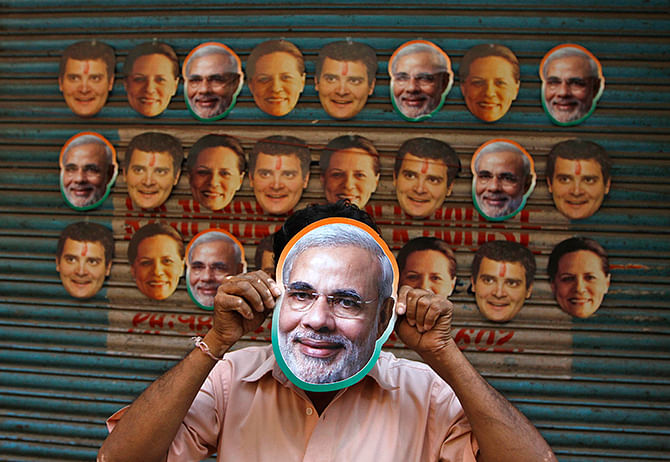Modi used caste strife to tighten grip: Cable
Modi used caste strife to tighten grip: Cable

Narendra Modi used caste or class resentments within Hinduism to tighten his political grip after effectively manipulating religious strife "to strengthen his power base during and after the 2002 riots in Gujarat", according to a leaked US cable.
The 63-year-old chief minister of Gujarat is the prime minister candidate of Bharatiya Janata Party (BJP). Now in the middle of the Indian Lok Sabha election, Modi is running an aggressive campaign to secure the premier post of the world's largest democracy.
Criticised over his role in the 2002 Gujarat riot and repeated denial of his marriage at a young age, Modi admitted in documents submitted to election office Wednesday of his marriage with one Jashodaben who is almost of his age.
WikiLeaks, the international non-profit publishing secret information, today tweeted a leaked cable sent from Mumbai on August 10, 2005 which shed light on the then political situation in Gujarat with special focus on Modi's move to consolidate political grip.
Titled 'Gujarat: Wily Modi Weakens His Opponents and Positions Himself For Bigger Things', the cable was sent by Linda C Cheatham, US public affairs officer based in Mumbai.
"Having effectively manipulated religious strife to strengthen his power base during and after the 2002 riots in Gujarat, Modi is now using caste/class resentments within Hinduism to tighten his grip, many of our contacts believe," the cable reads.
According to the cable, "controversial" Gujarat BJP chief minister Modi on August 1, 2005 expanded his cabinet by inducting 11 new ministers meeting a long-standing demand of the rebels within his own party who had openly criticised him for not sharing power more broadly.
Modi actually ingeniously weakened his rebels by only appearing to devolve some power to them, and by securing pledges of loyalty, Cheatham opined.
Meanwhile, Cheatham at her writing predicted that Modi may face troubles in future for himself as his move might alienate many of the wealthier business interests that have supported him in the past.
"Modi may also be facing new troubles from the Vishwa Hindu Parishad (VHP). One parliamentarian close to the VHP, Ahmedabad-based Govardhran Zhadapia, used the cabinet-induction ceremony to openly refuse the cabinet posting that Modi had offered him. Zhadapia said he refused the cabinet seat to protest what he called Modi's non-democratic ways," the cable further added.
The VHP was reportedly angry then as Modi had not sufficiently acknowledged the group's role in his election, it stated, "but caste/class tensions may also factor in their thinking."
Despite being ideologically linked between Modi and the VHP, Cheatham expressed her fear, "The VHP may not work as whole-heartedly for the BJP in the civic elections that was scheduled for Ahmedabad and other cities in 2006."